#World Farm Animals Day
Explore tagged Tumblr posts
Text












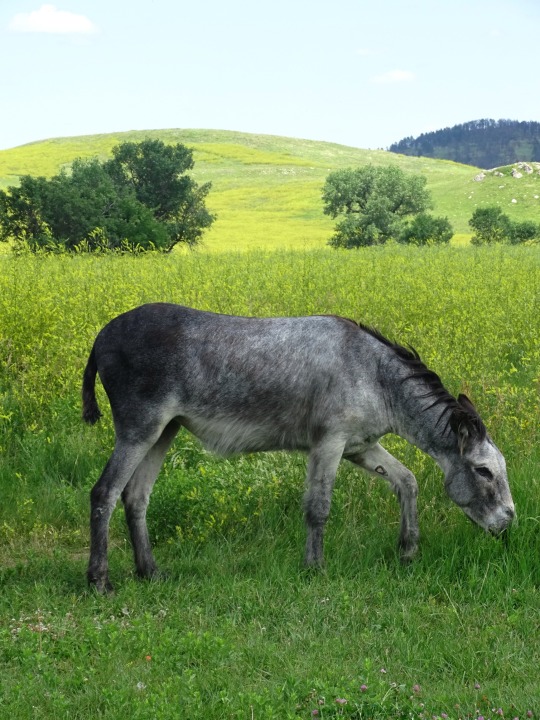






World Farm Animals Day
Created in memory of Gandhi, who advocated respecting all animals, National Farm Animal Day is about the crucial and often mistreated farm creatures.
Farm animals are delightfully cute, especially baby farm animals with their squeaks and squeals, running and playing. Even more than that, farm animals also play an important role in modern society. Take some time to appreciate them this World Farm Animals Day!
History of National World Farm Animals Day
Established in memory of Mahatma Gandhi, who believed in treating all living beings with respect, World Farm Animals Day was founded to highlight the poor conditions suffered by some farm animals, and promote awareness in the hope something may be done to improve the lives of these innocent creatures. The first World Farm Animals Day was celebrated in 1983 as part of an international movement for the rights of farm animals.
Sometimes also called the World Day for Farmed Animals (WDFA), this day aims to raise awareness for and commemorate the 65 billion land animals who are raised for food every year. Since most people believe that animals should not be harmed unnecessarily, this day seeks to bring together those who are passionate about farm animal welfare and working to make changes!
How to Celebrate World Farm Animals Day
Show some love and attention to these often overlooked creatures by celebrating World Farm Animals Day. Get involved with the day in a variety of creative ways, including some of these ideas:
Celebrate World Farm Animals Day with Children
Although World Farm Animals Day has an important, and somewhat sad, origin in the sense that it was created to raise awareness of suffering, it can be celebrated in different ways, particularly with children.
Taking children for a visit to a farm is a great way to teach them about farm animals, and it may also be a good chance to instill in them the message of treating animals with respect. Teachers might want to take an opportunity on World Farm Animals Day to create lessons around the different farm animals, how they contribute and why they are important in the world today. From preschoolers to older children, this day offers a perfect opportunity to grow a generation of responsible humans who treat all creatures well!
Change Some Eating Habits
World Farm Animals Day is actually a great day for a person to make a commitment to try to incorporate fewer animal products in their diet. Perhaps it’s not realistic to immediately become a vegan and cut out all animal products. However, it might be a good time to commit to taking one day a week for the family to prepare meals without meat. Or perhaps this is a good time to make the switch from dairy milk (which many humans really don’t process well anyway!) to drinking plant-based milk such as oat, soy, almond or another alternative.
In addition, taking care about where animal products are sourced from can make a huge difference. For instance, commit to purchasing cage-free eggs, farm raised chickens or responsibly sourced seafood.
Support an Animal Charity
Another great way to celebrate is by donating to an animal protection charity that works to promote the welfare of animals, including those on farms. Take a look at some of these non-profit organizations that are dedicated to animals, and perhaps look into making a financial gift or even volunteering throughout the year:
Farm Sanctuary. This charity offers many ways for folks to get involved, including becoming members of the Friends of Hilda Club, named after the first rescue animal to benefit from Farm Sanctuary.
Faunalytics. Don’t let saying the name be intimidating, because this organization works to collect and share data, research and knowledge that is vital in understanding how to better care for farm animals and limit industrial animal farming.
Human Farming Association. This campaign against factory farming aims to stand up to big business, speaking on behalf of the animals who cannot speak for themselves.
Source
#Stewart#World Farm Animals Day#WorldDayForFarmedAnimals#2 October#goat#sheep#Spain#Sweden#original photography#travel#vacation#flora#fauna#Tyresta National Park#River Västerdalälven#Ystad#cow#cattle#meadow#LUGA#Schweiz#Switzerland#donkey#begging burros#USA#Custer State Park#Kings Landing Historical Settlement#Canada#horse#pig
2 notes
·
View notes
Text
World Farm Animals Day
A Day in the Life of Bella the Cow
Bella, a cow, wakes up early in the morning, enjoying the cool breeze and soft hay. She is ready for milking, and she walks to the barn where Farmer Joe is waiting. The rhythmic process comforts her. Bella then moves to the pasture, where the sun rises and the grass is dewy. Other cows graze and laze in the sunshine, while Bella enjoys the peaceful quiet.
By midday, the sun is high, and Bella takes a break from grazing to rest under the shade of a big oak tree. She observes birds chirping and Farmer Joe's dog Max barking at the chickens. In the afternoon, she spends time near a small pond, enjoying the cool breeze and watching ducks glide across the pond.
As evening approaches, the skies turn pink and orange, painting the farm in beautiful colors. Bella returns to the barn, ready for another round of milking. She lets out a contented moo as Farmer Joe greets her with a smile. She settles back into her cozy stall, nibbling on fresh hay before closing her eyes.
As night falls, the farm quiets, with distant chirps of crickets and the occasional hoot of an owl. Bella is full and happy, drifting off to sleep, ready to wake up and do it all over again tomorrow.
0 notes
Note
So anyway you repeatedly say we only feel corn husks and similar inedible parts to cattle but Never add a source to back it up. Having worked on farms I’m afraid for the most part the feeds I’ve seen have been parts entirely edible to humans. And like fuck man 5% of all grown soy is fed to humans or however the stat goes, do you really think the remaining 95% is inedible? really?
Anyway yeah I’m asking for a source here cause I don’t want to add this on to months old post
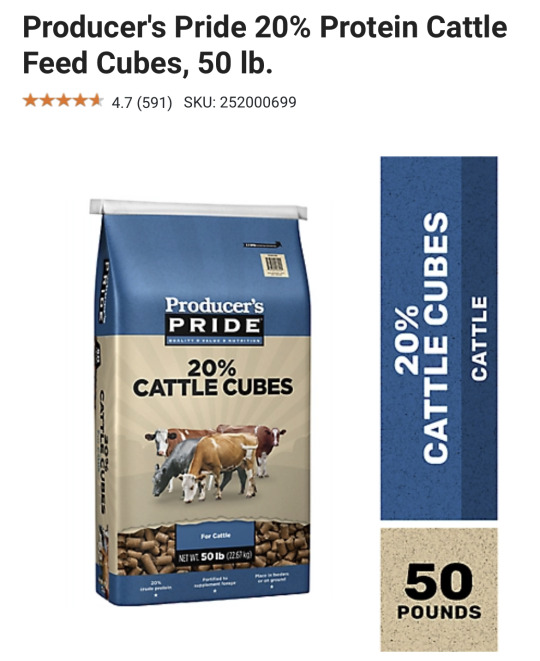
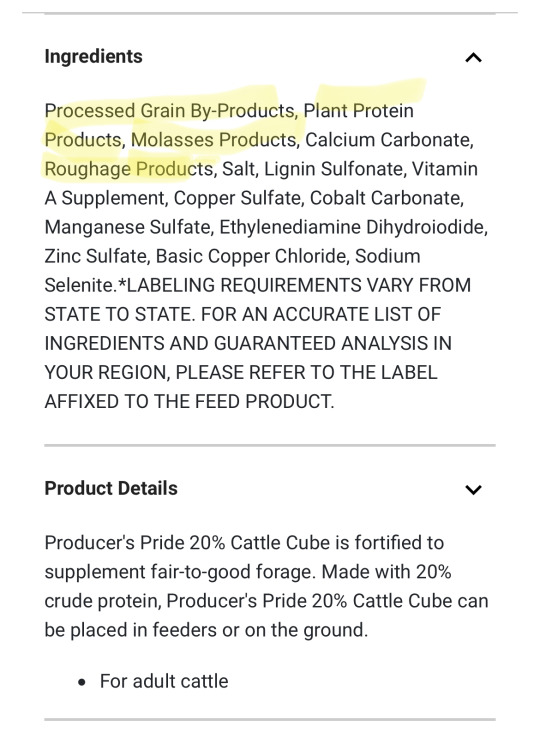
Ingredients such as “grain by-products��� are referring to the husks, stalks, and other “green” parts of the plant that we humans don’t actually have the digestive capabilities to eat. The breakdown of most livestock feeds looks like the above when you actually take a look at it.
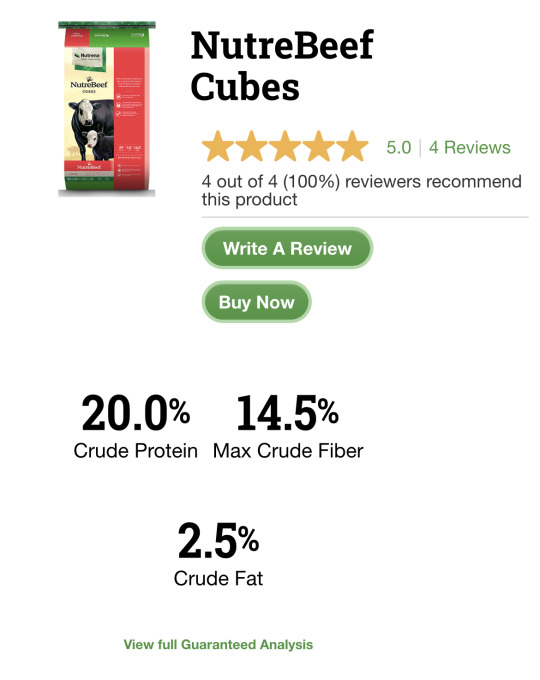

Different cattle feed, similar ingredients. Still primarily things that, and I have to stress this, you cannot eat. This one is slightly higher in quality and does indeed have actual grain products included. Some of those are edible to humans. Some are not. Generally cattle are fed cattle cubes with supplemental mineral licks and hay. Some also supplement with whole corn, but I can gladly assure you that corn is not in short supply and even if all the corn sold to animal feed was donated to the poor, you can’t actually live off of corn because there’s very little nutrition in it. Hence why in both human and animal food it’s typically seen as a filler ingredient. Keeps the mouth busy with a meal without making your stomach feel full and you end up eating more without feeling satisfied.
Soybeans are really only often used in feed for pigs because they’re a great source of protein for these animals. I would state that soy is also a terrible option to use as an emergency food for humans in need because while, yes, it is indeed a healthy bean, it’s also one of the top eight foods that humans are frequently allergic or intolerant towards. I’d also ask you for whether your 5% of all grown soy statistic is referring to the beans or the entire plant because yeah the beans are the edible part. The rest of the plant isn't especially healthy for humans to eat. I would say the beans are around 5% of a mature soy plant sure.
#No offense anon but when you come here with ACTUALLY MOST OF WHAT FARM COWS EAT IS HUMAN FOOD and bring up SOY in the discussion of COWS#I somewhat doubt you actually have much experience farming#because no actually cattle benefit from the green parts of the plant more than the bean parts in most cases#corn is used as a cheap supplemental feed because it’s cheap and it’s cheap because there’s so so SO much of it#And corn isn’t grown in special livestock only plantations when it’s used as feed as opposed to human food either#corn is grown en masse and processed and then sold to various companies which use the corn for various things#if animal feed companies stopped buying corn and that corn was instead bought by human food companies#that doesn’t mean corn would be any more or less accessible to the hungry#because it would go to grocery stores and TV dinner companies and sauce companies and soda companies and so on#and it would still be sold same as always#world hungerTM isn’t caused because people can’t afford corn#corn is dirt cheap and most people can afford it#it’s just barely a step above eating sand and you can’t live off of it#I’ve gone a few days only eating corn products because they were cheap#and shocking no one I had no energy and felt just as hungry after each bowl as I had before the last#people cannot survive off of that#giving corn to livestock isn’t taking away any resource of value from humans#sorry it just isn’t
333 notes
·
View notes
Text
Transformers: Lost World - All Leaders + Their Weaknesses
Classes:
Miner – Can dig in the ground for deep planted materials and break Energon
Farm Skill – Digs soil and can overturn used spots. Can craft and break down materials.
Gatherer – Can hold excess supplies and materials and can retrieve items for you out in the field
Farm Skill – Taking ready crops and organizing them, feeding animals
Infiltrator – Can cut down trees, vines, and ice for materials or to unblock paths. Can climb cliffs and to higher areas.
Farm Skill - Tidying up the farm, animal stalls and the Transformer stables, keeping the area and its inhabitants mess-free and happy, and can also plant seeds. The more Transformers and animals you have, the easier it is for your farm to become disheveled, and all your Companions will grow upset over time.
Scout – Can sense nearby hotspots of energy and alert to items in the wild
Farm Skill – Retrieves water for crops or animals in their station
Wrecker – Can demolish rocks and heavy-duty minerals, unblocking paths as well. Can climb cliffs and to higher areas.
Farm Skill – Crafting or breaking down materials for crafting is their best use though they can also dig soil and patrol the farm’s boundaries for extra tidiness
Healer – Can heal any Transformer you take with you as well as yourself to a degree
Farm Skill – Tendering to planted crops or animals, keeps them healthy when you are away
Combatant – The best for fighting other Transformers to subdue and tame them as well as great warriors for challenges and battles. Can climb cliffs and to higher areas.
Farm Skill – Transformers can get bored, but their favorite pastime is friendly battle. Keeping a Combatant to maintain hobby stations will keep your friends happy.
Leader – Jack of all trades, can do almost everything on and off the farm. Certain leaders lack one skill compared to other leaders though so be mindful where you place them.
Farm Skill – Practically everything.
All Leader Class Transformers have to be fought to tame. And once acquired, they can perform any job the others can...except one. Depending on the Leader, their skills vary.
35. Grimlock - While he excels in combat and most chores, Grimlock is a very weak Healer type. He doesn't do well in trimming crops to maintain health and providing direct care for creatures.
36. Predaking - He cannot be a Scout. Finding items aren't exactly what he cares to do but using water on crops and to replenish animal's water buckets is very hard with half his abilities relying on fire.
50. Ramhorn - Ramhorn has immense difficulties with being an Infiltrator. He has neither the patience or the specialty to deal with vines and trees as well as cleaning up messes. He would rather make messes than clean them.
51. Ravage - Stubborn-headed, yes, but his size does limit him to what he can do. Ravage cannot be a Wrecker class as giant obstacles are a bit too strong for him. He also is better at rearranging crafted items than actually dealing with them.
85. Optimus Prime - Excels in everything except being a Miner. He doesn't have the strongest knowledge of unearthing materials nor digging plots for crops.
86. Megatron - Megatron may be the head honcho of the Decepticons but he isn't going to do everything. Megatron has quite the difficulties with being an Infiltrator. He doesn't deal with mediocre blocked paths nor dealing with a messy camp. He'll leave those chores for other bots.
94. Elita One - Elita has no patience for being a Healer. She sent bots to the infirmary during the war; that's the only relationship she has in terms of medical and natural care.
100. Ultra Magnus - High and mighty Ultra has a lack of association with being a Scout as he isn't the best at tracking things nor retrieving water.
101. Motormaster - He boasts a lot but sucks at being a direct Combatant unless he's cornered. And he doesn't care for seeing to keeping his peers happy in friendly battle.
115. Sky Garry - Good Garry is a star example of a bot except as a Miner. He prefers the sky, hence his name, rather than sticking to the ground and certainly digging in it.
116. Slipstream - Her intelligence rivals many and she finds that while in no sense weak, she doesn't deal with obstacles a Wrecker would. She's also not a great craftsman, preferring to draw up the schematics than physically do them.
134. Tidal Wave - A great behemoth of a Transformer, he is a terrible Scout. A little too big to recognize materials and hidden things from his height, he'll leave the watering and seeking tasks to bots better suited for it.
135. Omega Supreme - The sentinel of Iacon, Omega is a kind soul deep down and surprisingly doesn't like to be a Combatant. He would rather farm than harm. He can also do his chores faster, covering the maximum amount of ground work than most others.
136. Astrotrain - The dark train is an irate fellow who despises being a lackey often times so getting him to be an Infiltrator is most difficult. If he can't crush it underfoot, he doesn't care about doing it.
141. Tarn - He doesn't much care for keeping animals much so it's best not to entrust him with feeding them as a Gatherer. He also doesn't care about collecting supplies out in the wild. If you want your stuff, it's more or less up to you to get them.
166. Nemesis Prime - Nemesis (no, not the ship) is spiteful and won't respond to being a Healer. If they aren't dying, there's no need to fix them. Enough said.
173. Dai Atlas - While he is a good Councilmember, Dai Atlas doesn't do well as a Wrecker. He prefers to fix things than break them. He had no problems with animals though.
175. Sentinel Prime - The cocky Prime has one weakness and that is being a Miner. Grunt work more like to him. He will take out large obstacles, but he won't touch honest ground work.
176. Star Saber - He excels in being a strong Autobot but he is not great at being a Gatherer. It's not that he's forgetful or ignorant, he just isn't used to having to gather supplies and feed animals. Maybe he will want to learn someday.
186. Galvatron - The follower of Unicron holds not a lot of regard for life, especially organic life. So, his weakest point is the chores of a Healer. One day, he may come off his high horse and tend to the animals and crops properly but until then, don't leave them unattended in his care please.
187. Prima - A sweet soul throughout, Prima is a natural caring bot but he is not good at being a Scout. He has a million and one things on his mind, tracking items and keeping water for your animals and crops aren't exactly high on his priorities list.
188. Vector Prime - Vector is a lover, not a fighter. He will not indulge himself or others in battle as a Combatant unless in an emergency. Ironically, he has quite the power behind his attacks. he just doesn't utilize them.
189. Micronus Prime - If it can't be levitated, he doesn't deal with it. Micronus will care for all life but has no regard for heavy-duty tasks or things that require patience like crafting. So, you won't find him as a Wrecker anytime soon.
190. Solus Prime - Solus is the best craftsman in the galaxy. Maybe that's a little dramatic but she is the creator of many artifacts and relics you may find. But she is not the best Infiltrator. She makes messes but she has trouble keeping her own station clear much less your camp, and slicing through little annoyances is not what her talent calls for.
191. Liege Maximo - Liege has many things, including a Glitch-Mouse up his aft, but he doesn't deal with being a Miner. He has far too many other chores he would prefer than digging around for useless things.
192. Megatronus Prime - The angry Prime is not good at being a Healer though he may try. Despite his dark nature, he doesn't always act as he looks, but he understands that taking general care of animals and crops are just not in the cards for him.
193. Quintus Prime - Quintus is a terrible Combatant. He can create and destroy but physical fighting he lacks solely because he's not used to it. Fighting Unicron was one thing, other Transformers the same size and possibly with the same level of powers is quite different.
194. Amalgamous Prime - With a horrible sense of perception among all his quirks, Amalgamous doesn't like being a Scout. Getting him to find your car keys would somehow leave your house burning down. He's just not good at it.
195. Alchemist Prime - As a natural soothsayer of the barkeeping world, Alchemist adores animals but his greatest weakness is actually being a Gatherer. he can talk for days but can be easily distracted and forget that while everything needs a drink, they also need to eat.
196. Nexus Prime - Nexus doesn't like to be responsible for others' idiotic decisions so naturally, he makes a terrible Healer. He will fight but he won't aid you as you die. That's a you problem.
197. Onyx Prime - The Beastmaster of the Predacon race understands and loves creatures great and small, but he is not the best Wrecker. He would rather let those more capable with brute strength made for it go ahead and do what they need to. He'll keep with the animals and crops.
198. Alpha Trion - Alpha Trion is a master librarian but he is not the strongest Combatant in the field. He would rather read and take care of life than fight it. While not a pacifist per say, he's definitely not someone you would take into battle a lot.
199. Unicron - The dark god holds a deep hatred for many things, but he lacks most as a Healer. His blood with siphon life in direct exposure, so how would he even begin to help them even if he wanted to?
200. Primus - A sacred soul and the leader of Cybertron overall, Primus is the bearer of life itself. While not heavily responsible for organic existence, they are a valiant and benevolent kindred breed. But if Primus were to be not as good as others in one specific field, they are a bit perplexed by the skill of being a Miner. Digging is not something they have had a lot of practice with given their normal size.
#transformers lost world#transformers g1#transformers animated#transformers prime#farm sim#cozy sim#video games#grimlock#predaking#ramhorn#ravage#optimus prime#megatron#elita one#ultra magnus#motormaster#sky garry#slipstream#tidal wave#omega supreme#astrotrain#tarn#nemesis prime#dai atlas#sentinel prime#star saber#galvatron#prima#vector prime#micronus prime
34 notes
·
View notes
Text


also here's a couple photos from the other day bc 1) REAL LIFE SHEEP (lii mwatoon 🐑) !!!!, and 2) this little goat kid fell asleep in my arms 😭😭💗💗💗 aen pchi shev.... aen pchi biibii.... kwaayesh pchi... katawashishin.... :') sniffles !!!
#i would lay down my life for that lil man fhdkdskl I'd be the happiest goober in the world if i could hold a baby goat every day#i was born to be a farmhand WAUGHHHH curse my allergies... animals + dust + hay (and thats just the farm-related allergies) -_-#also the chronic fatigue exists now and would impair my ability to work on a farm but DHFHDKL#(and yes i know it would not be holding baby goats all the time LMAO)#(i want to do hard manual labour... i want to be part of the life and death cycles... i want the epic highs and lows of farmlife... 😭)#ANYWAYS... sheep... i love sheep sm... dandyfae's kin....#dandy.cmd#dandy.jpeg
8 notes
·
View notes
Text
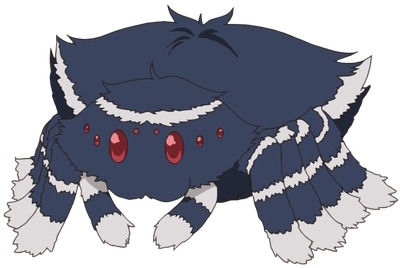
Today’s anime mascot of the day is…!
Zabuton from Farming Life in Another World!
#Zabuton#Farming Life in Another World#anime mascot#anime#anime mascot of the day#anime pet#mascot#anime pets#anime mascots#mascots#Black#bug
40 notes
·
View notes
Photo

Today’s Maid of the Day: Ann from Farming Life in Another World
59 notes
·
View notes
Text
ok aki queue has eniugh for 3 weeks my hands are freezinggg
#the orher day i said i was gonan work on it and trust me i tried but there was this one panel that was annouing tf out of me#bc with the black and white versions i have to edit out mangareader's annoying watermark#and it was in thebworst spot lmao so i had to use my tablet to clean it#i redid it 7 times on 3 diff days but it doesn't look so bad now#i could've used a diff source that didn't have the watermark but i didn't wanna sacrifice thebquality#mangareader's quality was better than everyvother site i saw#it should post either tomorrow orbsatuday idk it's the onwnwith himeno and power in rhebhallway#thebwatermark was on the hatch shading on aki's back 🪦#scarlett.txt#being a perfectionist is so annoying bc no1 isngonna noticenexcept meeeeee#i tell myself im gonna crawl under thenelectric blanket and rest but zctually imvgoing to play minecraft offline#i was babysitting earlier and trying to entertain my sister so i let her have an old world i abandoned last year#there isn't much in it but she was very happy when i got all rhe animals and tied their leadsvto fence posts#im gonna make her a big farm so she can learn but for now i need to finidh her house so that i can turn on survival tomorrow#she reallywants to see the creepers#shebalso wants to see dolphins#and she wamts me to get her a cat#i definitely need the cats to keep thebcreeepers away but i haven't seen any villages and chunkbase's maps haven't been working for me
2 notes
·
View notes
Text
I actually survived 100 days in my Minecraft world and didn't die once lmao
#yeah at this point pirated video games are one of the only things keeping me sane#and minecraft can be a real comfort bc I've been playing it since... fourth grade. I think?#so that's 2015-2016#despite all that time I've never gotten too good at it#spent most of my days in creative building statues to cartoon characters in a super flat world#but I'm actually trying to play it properly now#and what I've achieved. 100 days in survival with no deaths. albeit on easy mode#is actually a huge milestone for me#and I'm rather proud of myself#I haven't done much. house farm and croptopia orchard#tamed a wolf and two parrots and am currently in the process of building animal sheds#haven't even breathed in the direction of the nether or end yet#but still#and I'm actually having fun doing something for once#I know. me. having fun? who am I and what have I done with nia?#but running around in this silly little block game does let me take my mind off a lot of things#and that's gotta count for something right#minecraft
3 notes
·
View notes
Text
Anime of the day: Isekai Nonbiri Nouka

Alt title: Farming Life in Another World
Released: 2023
Hiraku spent the last years of his life in a hospital bed, suffering from a fatal disease, till he passed away. Then he is reincarnated in a different universe where he can live as he pleases. He is given a kind of an all-in-one farming tool that he can convert into whatever practical tool he desires. He intends to create and cultivate everything from scratch in his new home hidden deep in the forest.
#Isekai Nonbiri Nouka#Farming Life in Another World#2023#anime of the day#anime recommendation#anime review#anime#anime rec#anime rec list
10 notes
·
View notes
Text
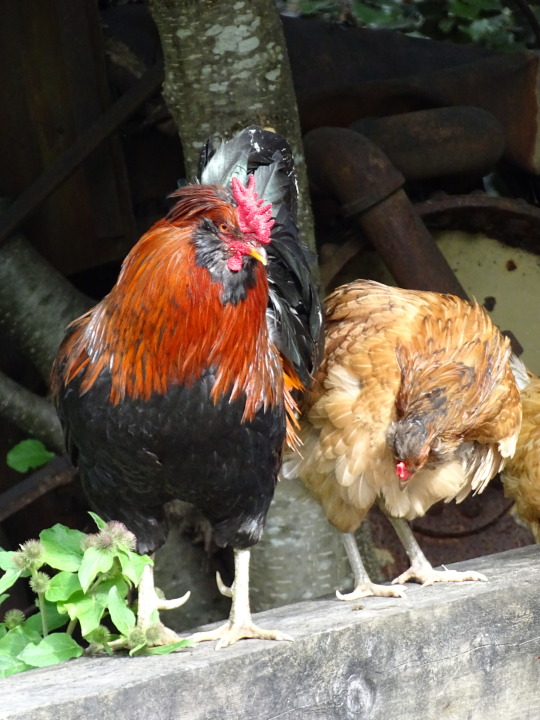
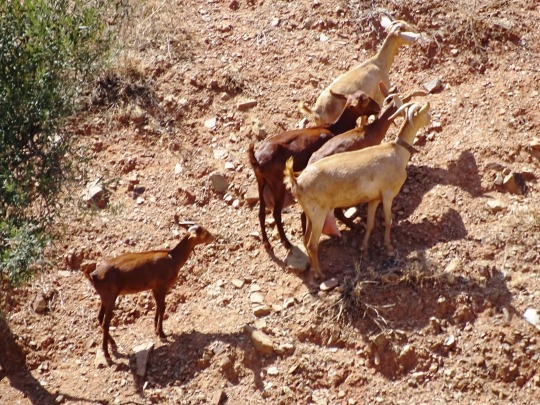

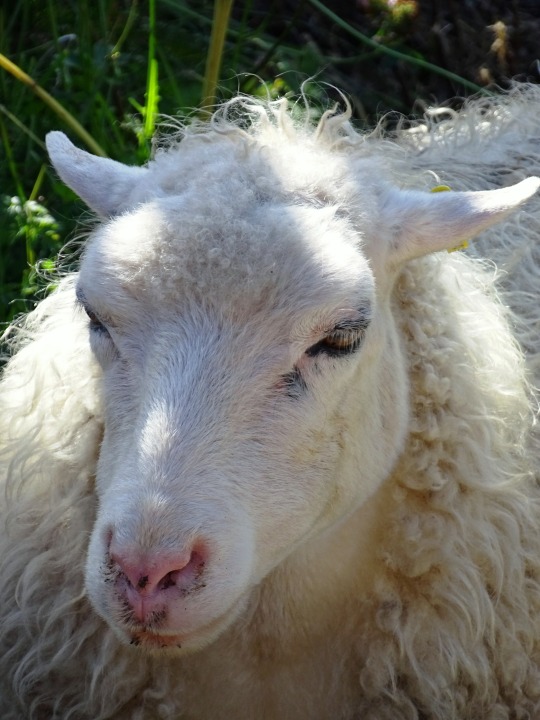
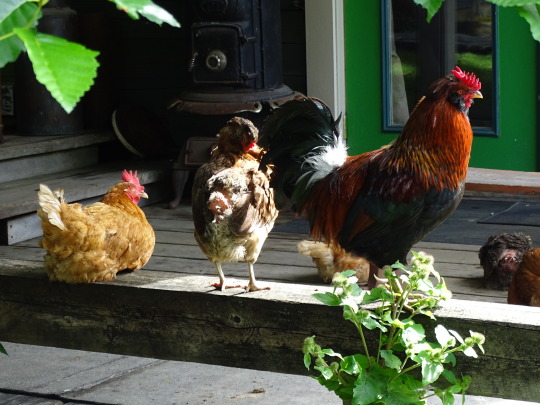



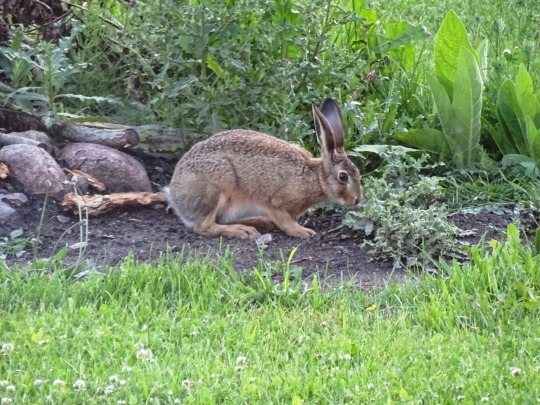
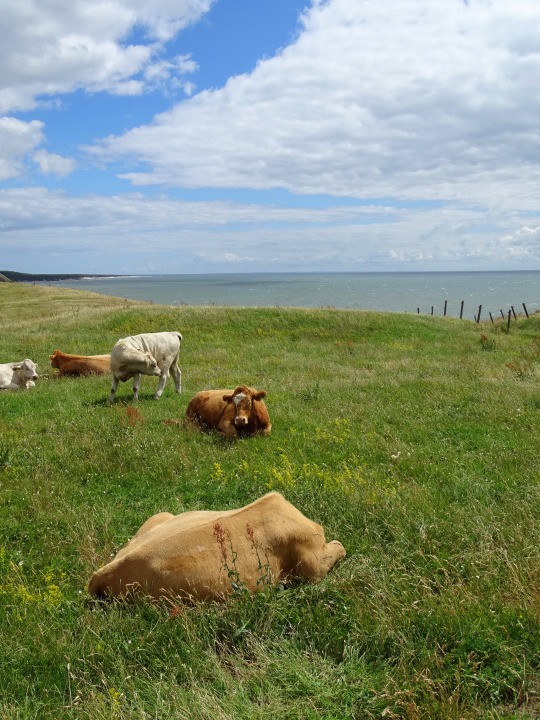
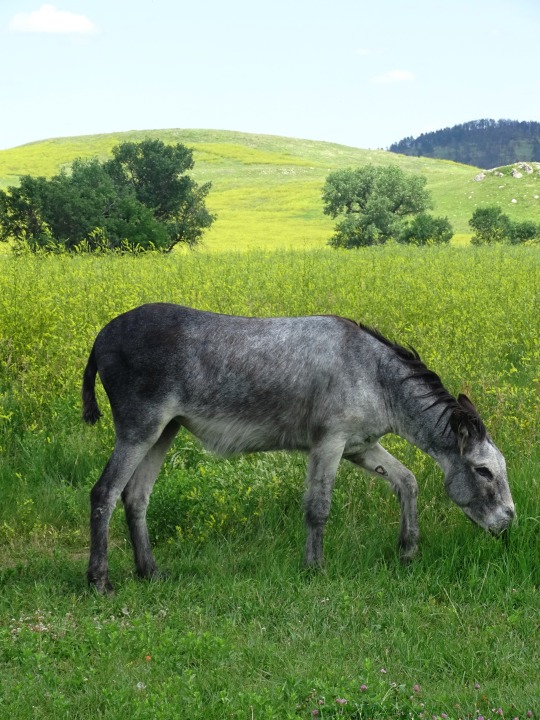
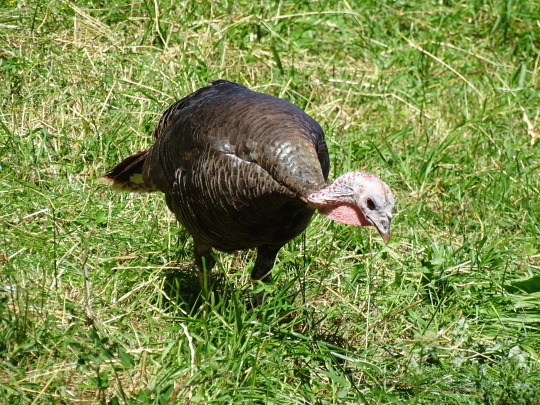

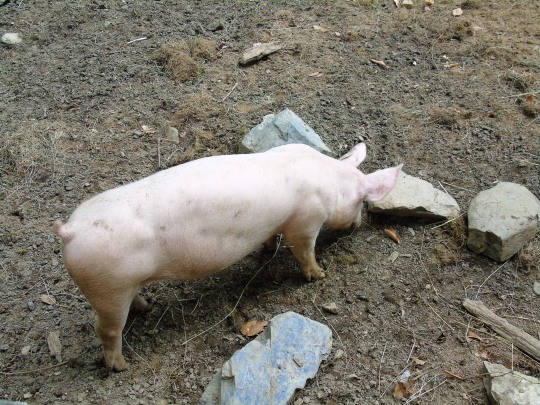
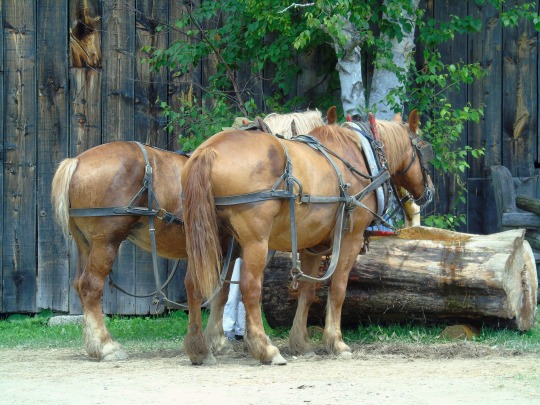


World Farm Animals Day
Created in memory of Gandhi, who advocated respecting all animals, National Farm Animal Day is about the crucial and often mistreated farm creatures.
Farm animals are delightfully cute, especially baby farm animals with their squeaks and squeals, running and playing. Even more than that, farm animals also play an important role in modern society. Take some time to appreciate them this World Farm Animals Day!
History of National World Farm Animals Day
Established in memory of Mahatma Gandhi, who believed in treating all living beings with respect, World Farm Animals Day was founded to highlight the poor conditions suffered by some farm animals, and promote awareness in the hope something may be done to improve the lives of these innocent creatures. The first World Farm Animals Day was celebrated in 1983 as part of an international movement for the rights of farm animals.
Sometimes also called the World Day for Farmed Animals (WDFA), this day aims to raise awareness for and commemorate the 65 billion land animals who are raised for food every year. Since most people believe that animals should not be harmed unnecessarily, this day seeks to bring together those who are passionate about farm animal welfare and working to make changes!
How to Celebrate World Farm Animals Day
Show some love and attention to these often overlooked creatures by celebrating World Farm Animals Day. Get involved with the day in a variety of creative ways, including some of these ideas:
Celebrate World Farm Animals Day with Children
Although World Farm Animals Day has an important, and somewhat sad, origin in the sense that it was created to raise awareness of suffering, it can be celebrated in different ways, particularly with children.
Taking children for a visit to a farm is a great way to teach them about farm animals, and it may also be a good chance to instill in them the message of treating animals with respect. Teachers might want to take an opportunity on World Farm Animals Day to create lessons around the different farm animals, how they contribute and why they are important in the world today. From preschoolers to older children, this day offers a perfect opportunity to grow a generation of responsible humans who treat all creatures well!
Change Some Eating Habits
World Farm Animals Day is actually a great day for a person to make a commitment to try to incorporate fewer animal products in their diet. Perhaps it’s not realistic to immediately become a vegan and cut out all animal products. However, it might be a good time to commit to taking one day a week for the family to prepare meals without meat. Or perhaps this is a good time to make the switch from dairy milk (which many humans really don’t process well anyway!) to drinking plant-based milk such as oat, soy, almond or another alternative.
In addition, taking care about where animal products are sourced from can make a huge difference. For instance, commit to purchasing cage-free eggs, farm raised chickens or responsibly sourced seafood.
Support an Animal Charity
Another great way to celebrate is by donating to an animal protection charity that works to promote the welfare of animals, including those on farms. Take a look at some of these non-profit organizations that are dedicated to animals, and perhaps look into making a financial gift or even volunteering throughout the year:
Farm Sanctuary. This charity offers many ways for folks to get involved, including becoming members of the Friends of Hilda Club, named after the first rescue animal to benefit from Farm Sanctuary.
Faunalytics. Don’t let saying the name be intimidating, because this organization works to collect and share data, research and knowledge that is vital in understanding how to better care for farm animals and limit industrial animal farming.
Human Farming Association. This campaign against factory farming aims to stand up to big business, speaking on behalf of the animals who cannot speak for themselves.
Source
#Stewart#World Farm Animals Day#WorldDayForFarmedAnimals#2 October#goat#sheep#Spain#Sweden#original photography#travel#vacation#flora#fauna#Tyresta National Park#River Västerdalälven#Ystad#cow#cattle#meadow#LUGA#Schweiz#Switzerland#donkey#begging burros#USA#Custer State Park#Kings Landing Historical Settlement#Canada#horse#pig
0 notes
Text

Nature’s President
Happy World Photography Day!!!
#pygmy goat#nature’s president#world photography day#photo of the day#nikon photography#Nikon d5600#tamron#nature photography#farm life#farm animals#mr show#Abma’s Farm#nj isnt boring#summer 2023
6 notes
·
View notes
Text
nintendo and gamefreak treat your pokemon consistently challenge
like either they are sapient beings similar to humans to the point they can have conversations and be considered the same or they are hunter and farmed animals with powers making them both has weird implications
#like bdsp implies that the diamond and pearl clans hunted and ate pokemon which would be fine#except theyre also explicitly considered adopted family members in a literal sense with numbering off adamans siblings and everything#which would mean that they should get the same consideration and funerary rites as humans since they are family???#which would imply that all other pokemon would be the same level of being considered a person even if theyre nonfamily#NOT food (at least not usually there have been some cultures with funerary rites that involve eating the corpse but again thats not hunting#)#(or farming which is its own bundle of horrific implications)#maybe im thinking too hard about the funny mon game but its gotten to the point that the inconsistency is getting on my nerves#just let animals exist i promise nintendo it will not hurt and they already existed in the first place even if you try to erase them#weve all seen meowth eating a fish and the world didnt implode then its fine#you cant just take things from the cultures your trying to represent slap pokemon in the middle of them and call it a day#putting some thought into the implications gos a long way
2 notes
·
View notes
Text
It's National Pig Day, apparently
The movie's on Freevee right now, and I last saw it when it was on VHS, so...close to the '99 release date. 12-14. I read the book somewhere between 8-10.
I remember them actually sliding in under the radar a bit on this one. They set it up in future tense, with the farm collapsing after many years, watched by an old and tired group of animals, with the hound whose puppies were taken narrating its demise. An offroad from the book, certainly, but as the first adaptation post-Cold-War, and as a movie diving AUDACIOUSLY for the "Family" genre, not a bad sprinkling of imagination.
Fairy tales rarely end on the screen as they do in the book. That's because fairy tales don't promise happy endings, and television sets do.
Either way, it set up for the full trial and hanging of the chickens.

Pic unrelated, it's a hard sentence to jump off of
Oh Jesus I didn't intend that pun and now I have to leave it there
Y'all celebrate National Pig Day in your way, and I'll celebrate in mine
#national pig day#Today's secret word isn't#Animal Farm#Vaguely remembered movies#Cinema#Movies#1999#When normal people were busy watching The Mummy#OH! I KID!#I also watch The Mummy!#This world had many doors Ed boys
2 notes
·
View notes
Text
How many posts does it take to write the entirety of a poorly translated script of Romeo and Juliet that was then put through a uwu translator all written in the tags?
#so how yall doing#do you want to see it#I could just post the whole script#is there a character limit to literal tumblr posts?#I might kill myself if I actually do this#MY OLD ASS LAPTOP MIGHT KILL ITSELF#alright I need a popular tag#uhhhhh#sonic the hedgehog?#no no no#I have literally no relation to sonic the hedgehog except for my cucking joke#which btw eggman if you’re wife is fucking an animal maybe an end to the relationship would be good?#what should I cook tonight?#I should finish that fanfic#nnnnnnnnoodle#i wanna go home#country music is bad#like it’s the pop music of the whole tree of genres#like yes genre’s are bound to sound the same because originality killed itself the day the world thought of all outcomes#but like how interesting is listening to the same 4 topics in one song#Cars farm trucks god#like at least alternative music has the angst and the emotion#what do you bring to the table?#NOTHING?!#you’re the most boring person in a room full of angsty interesting people#i need sleep#can the tag count say I got to 30 already?#fuck#it’s still going?#WHY?
1 note
·
View note
Text
Dr Doolittle-style show about a detective who can talk to animals, except instead of talking like people the animals still talk like animals, just translated into English sentences, so the plot of most episodes centres around trying to figure out what the star witness testimony actually means.
Victim's murder was witnessed by her pet snake, whose tank was in the room. Unfortunately pet snake is incapable of describing the world around them except in terms of 'rocks' and 'meat', with their descriptions of individual forms of 'meat' focusing almost entirely on body temperature and smell.
(Solved when it turns out that their description of 'warm-cold meat with rock' was actually an attempt to describe a suspect with a prosthetic limb, which is pretty unnoticeable to a human, but looks dramatically different in infrared.)
Murder at a honey farm. Each witness managed to see about ~0.06% of the full crime, in order to get the full picture, you have to get them to swarm.
Victim was found several days after death, already crawling with maggots. Days into the investigation, protag begins a frantic search to find any surviving maggots/flies that were on the corpse, after realising that how the victim tasted would give vital information about the poison used.
Also there's at least one or two animals who actually do talk in full sentences and in terms humans can understand, and the reason behind this is never fully explained.
All cats in this universe talk in terms of 'mine/not-mine' and mainly focus on territory, mates and food, with the one exception of the main character's cat who is named Watson and knows how to use sarcasm.
All insects speak in one word sentences where everything is 'food', 'enemy' or (for hive insects) 'friend' and 'queen', with the exception of seven-spotted ladybirds specifically, who for some reason speak in full English sentences and are up to date and knowledgeable about world events. The protagonists is as concerned by the full implications of this as you are.
30K notes
·
View notes